
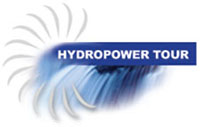
"Hydropower extracts energy from water
as it flows by."

"Green hydropower continues to generate electricity when the sun goes down and the wind stops blowing.
Head and Flow
for Geeks
You know who you are.
Youíre still reading, hoping weíll get to the meaty stuff about how much Head and Flow you need to run your microwave, how much electricity you can get from your guest bathroom faucet, and maybe even how to figure out if you have a potential hydropower site.
For you, we suggest Canyon Hydro's Guide to Hydro Power, which goes much deeper into the science behind hydroelectric generation.
Hydropower Tour, Part 1:
How Hydropower Works
Why water contains energy - and how we benefit
The Energy in Water
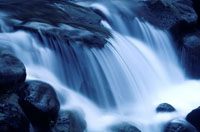
Hydropower captures the energy produced by moving water. The methods for harnessing this power are remarkably simple; in fact, our use of water power goes back hundreds of years. Todayís modern hydroelectricity plants may be many times more sophisticated, but they rely on the same principles used to power mankindís earliest machines.
The most important thing to remember is that water must be moving to generate power. A quiet lake may have the potential to generate power, but nothing happens until the water moves. Fortunately, Mother Nature does a terrific job of moving water.
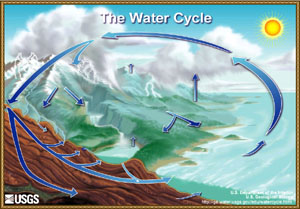
Remember learning about the Water Cycle when you were a kid? Itís the natural process we rely on for hydropower. Water evaporates from the ocean into the atmosphere and forms clouds as it cools. Then, while we duck under cover, the water returns to the earth as rain and snow, eventually forming streams and rivers as it heads back to the ocean to start the process all over again.
Thanks to gravity, the water moving down those streams and rivers can pick up tremendous force Ė energy we can put to work as hydropower.
Putting the Energy to Work
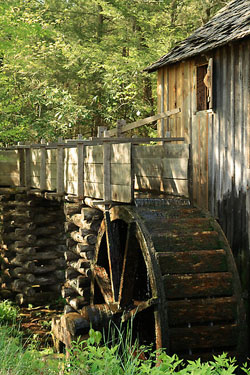
Thatís the essence of Hydropower: extracting energy from water as it flows by. A simple example is shown with the water-powered mill wheel. Water coming down a stream is diverted to the top of the water wheel. As each bucket fills, the added weight carries it to the bottom, turning the wheel as it goes. Notice that the water wheel is connected to a shaft, which connects to machinery inside the mill. The water flows and the machines turn Ė all by capturing a little energy from water as it follows its natural path back to the ocean.
Itís easy to see why water power can be so compelling. As long as water is flowing down the hill (thanks to the Water Cycle), energy can be extracted from it. Nothing is consumed; the water continues on. Water is a 100% clean, renewable resource Ė but with some substantial advantages: streams and rivers still flow when the sun goes down and the wind stops blowing. Plus, electricity from water power is far less expensive to produce than solar or wind power.
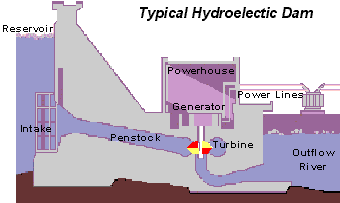
The vintage water wheel shown in the mill picture above is rarely used today, having been replaced with more efficient water turbines that are typically used to generate electricity. As shown in the diagram, however, the fundamentals of water power are the same. Water flows across the turbine, turning a shaft connected to a generator that produces electricity.
How Much Power?
Any moving water can produce hydropower. Add more moving water, or Flow, and you can produce more power. You can tell by looking that a raging river contains more energy than a small stream.
But if you add pressure to the water, you can get a lot more energy from it. (Ever see how far a fire hose can squirt water?) As it turns out, itís pretty easy to add pressure to water, simply by putting it in a container.
Water weighs quite a bit, and the sheer weight
of a container of water puts pressure on the bottom. The water in a
medium-sized aquarium puts about 1 pound per square inch (psi) of
pressure on the bottom of the aquarium. Now imagine an aquarium 100
feet tall. The water pressure at the bottom of that tall
aquarium
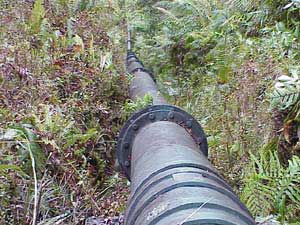 will
be about 43 psi Ė roughly the same as the average outdoor faucet.
will
be about 43 psi Ė roughly the same as the average outdoor faucet.
Hydropower systems build pressure either by containing the water behind a dam, or within a pipe that runs down a hill. The weight of the water behind the dam or in the pipe creates pressure at the bottom. More height creates more pressure, and more pressure means we can get more power from the flow of water. (The technical term for this vertical distance is Head.)
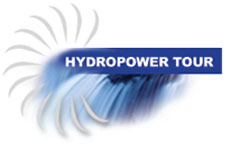
Continue to Types of Hydropower
